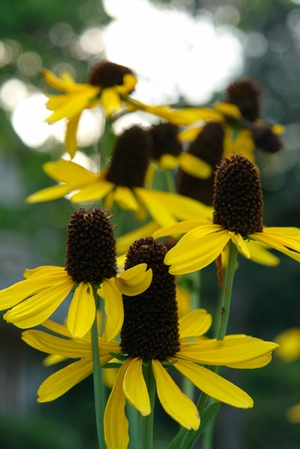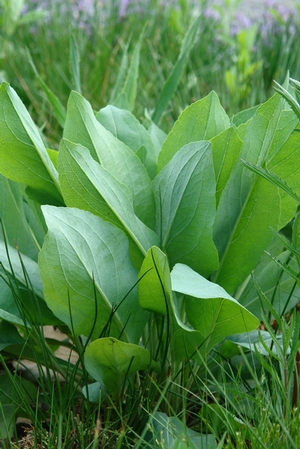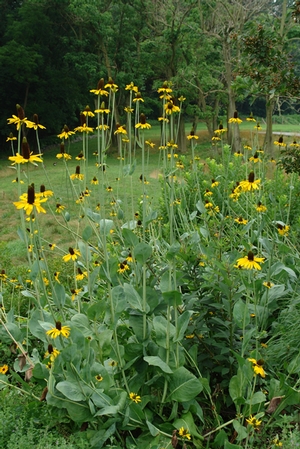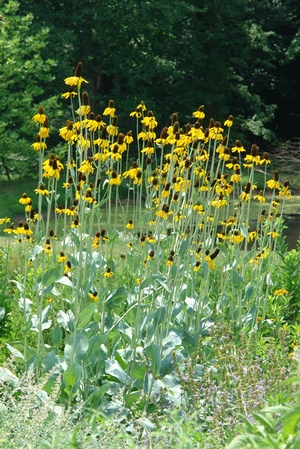Rudbeckia maxima
Common: great coneflowerRudbeckia maxima LP32 - 32 per flat
- Height: 6'-7'
- Spread: 3'
- Spacing: 18"-24"
- Hardiness Zone(s): 5-8


Rudbeckia maxima LP32 - 32 per flat



Huge powder-blue leaves make up 2' to 3' of basal foliage that is effective all during the growing season. In June and July, towering flower spikes explode with large, deep gold, drooping ray flowers with a black center. A must-have for the butterfly and bird lover! Reliable and deer proof.
Prefers moist, fertile soils but will thrive in average garden conditions in full sun. Likes wet feet, yet is surprisingly drought resistant. Spreads slowly by rhizomes. Deadhead to prolong blooming season. Propagate by root cuttings and division. Outstanding in mass plantings as a border perennial, in a cutting garden or as a specimen plant.
In July, a stand of Rudbeckia maxima backlit by the hot setting sun is in a class of its own. Growing up to 7’ tall and 3’ wide, this native perennial erupts from a mass of 18” glaucous blue-green basal rosettes with a flowering stem that is topped with bright lemon-yellow coneflowers with dark brown centers. Able to withstand hot, humid summers with ease, it is an architectural element in the garden when planted in mass.
Rudbeckia maxima prefers moist, fertile soils but will thrive in average garden conditions in full sun. While this plant likes wet feet, it is surprisingly drought resistant. Growing from Arkansas to Texas, with some populations found in South Carolina, it prefers moist open areas from roadside ditches to wet meadows. It spreads slowly by rhizomes and for best appearance, deadhead to prolong blooming season. In very rich soils, plants may require staking.
A quick visit to our rain garden and visitors can tell we enjoy mixing R. maxima with Eryngium yuccifolium – the two appear to be natural bedfellows. We allow the plant to go to seed where it will self-sow in good conditions. The seed is collected on property but for the bird enthusiasts, we take only as much as we need and leave the rest up for goldfinch and other small songbirds. It is a great plant for areas dealing with silt accumulation or in areas of periodic inundation – our Rudbeckia maxima show no stress at all. Perfect for mass plantings as a border perennial, in a cutting garden or as a specimen plant, this Rudbeckia does well in moist soils without being as aggressive as some of its cousins. In the late summer, the flowers attract native bees and butterflies.